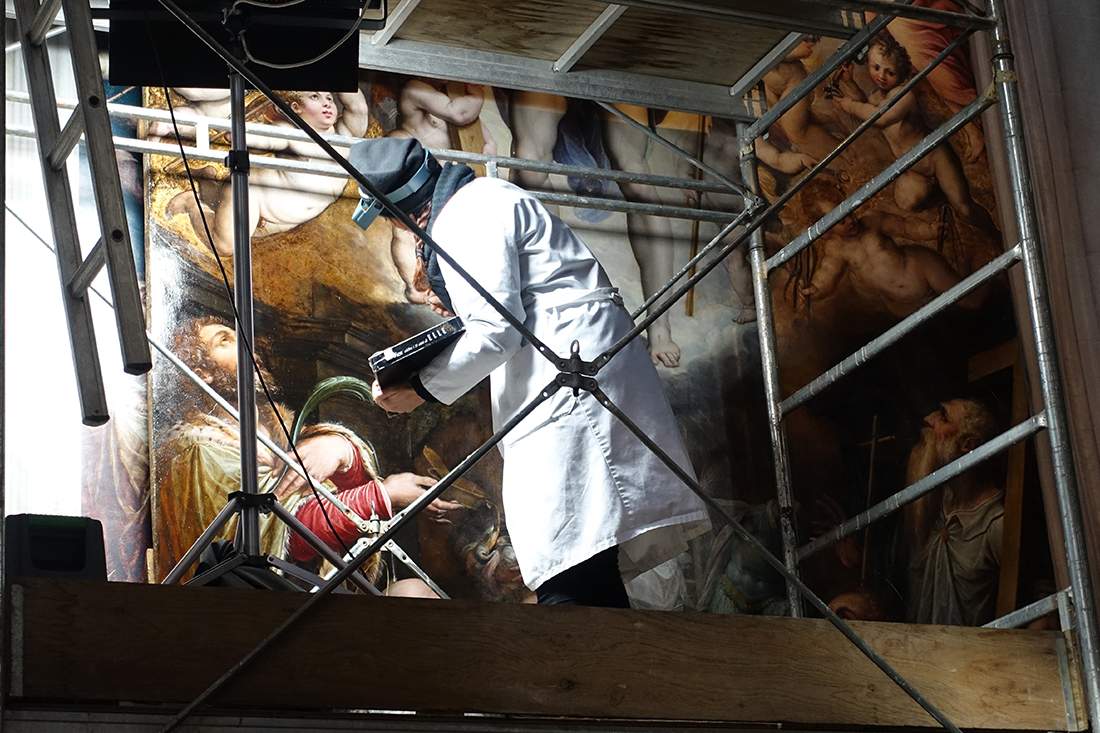One of the most controversial implications of the so-called “Phase 2” in the field of cultural heritage is the treatment that the April 26 dpcm reserved for restorers: the decree, in fact, completely forgot about them, since the reopening of construction sites was allowed but not that of restoration sites. Restorers’ businesses, which have ateco code 90.03.02, are excluded from those that will be allowed to resume operations on May 4, despite contributing to the construction fund like construction workers, who on the contrary will be operational from Monday. In fact, Annex 3 of the decree gives the green light to ateco codes 41 and 42 (“construction of buildings” and “civil engineering”), as well as the activities of furniture restorers, which fall under code 95 (“repair of computers and goods for personal and household use”), but within the broad group of code 90 (“Creative, artistic and entertainment activities”) no distinction was made.
Presumably the government followed Inail’s document with risk profiles for the various ateco codes: again, despite the “risk class” being identified as the lowest, the social aggregation class, by contrast, had the highest score on the scale (4), and perhaps as a result the dpcm excluded all class 90 workers from reopenings. A classification that makes sense for many workers who belong to the creative arts sector, but creates an illogical discrimination between construction and restoration sites.
Trade associations have already intervened on this government oversight. The CNA, in a note, wrote that this situation “runs counter to all objective logic since these are for the most part activities that take place on construction sites or in workshops without any contact with the public, generally with a small number of employees for each production unit and with very wide possibilities for social distancing. They are therefore activities with reduced risk of Covid-19 virus transmission, similar if not lower than that of construction sites and certainly lower than that of many industrial activities whose reopening is instead permitted.”
“The restorers who are members of the CNA,” the note continues, “express their disbelief and all their indignation at what appears to be a slavish and superficial approximation in the elaboration of the technical-political choices on the basis of which they are proceeding. The mistake was made by the Technical-Scientific Commission where in the document published on April 23, it assigned the ateco 90 code a level 4 (work carried out in close proximity with others most of the time), without checking the specificity of the restorer’s activity very similar to the construction site and not by chance, given that restorers apply the construction ccnl to their employees. In fact, it is not the generic membership in the Ateco 90 coding cluster, within which many activities related to Culture are classified, that identifies the type of economic activity and the characteristics of its production processes for the purposes of contagion risk.”
What the restorers are therefore asking for is an immediate correction of Annex 3 so that restoration companies can reopen their construction sites from May 4.
 |
| Construction sites reopen, but dpcm forgets restorers, assimilated to entertainment workers |
Warning: the translation into English of the original Italian article was created using automatic tools. We undertake to review all articles, but we do not guarantee the total absence of inaccuracies in the translation due to the program. You can find the original by clicking on the ITA button. If you find any mistake,please contact us.